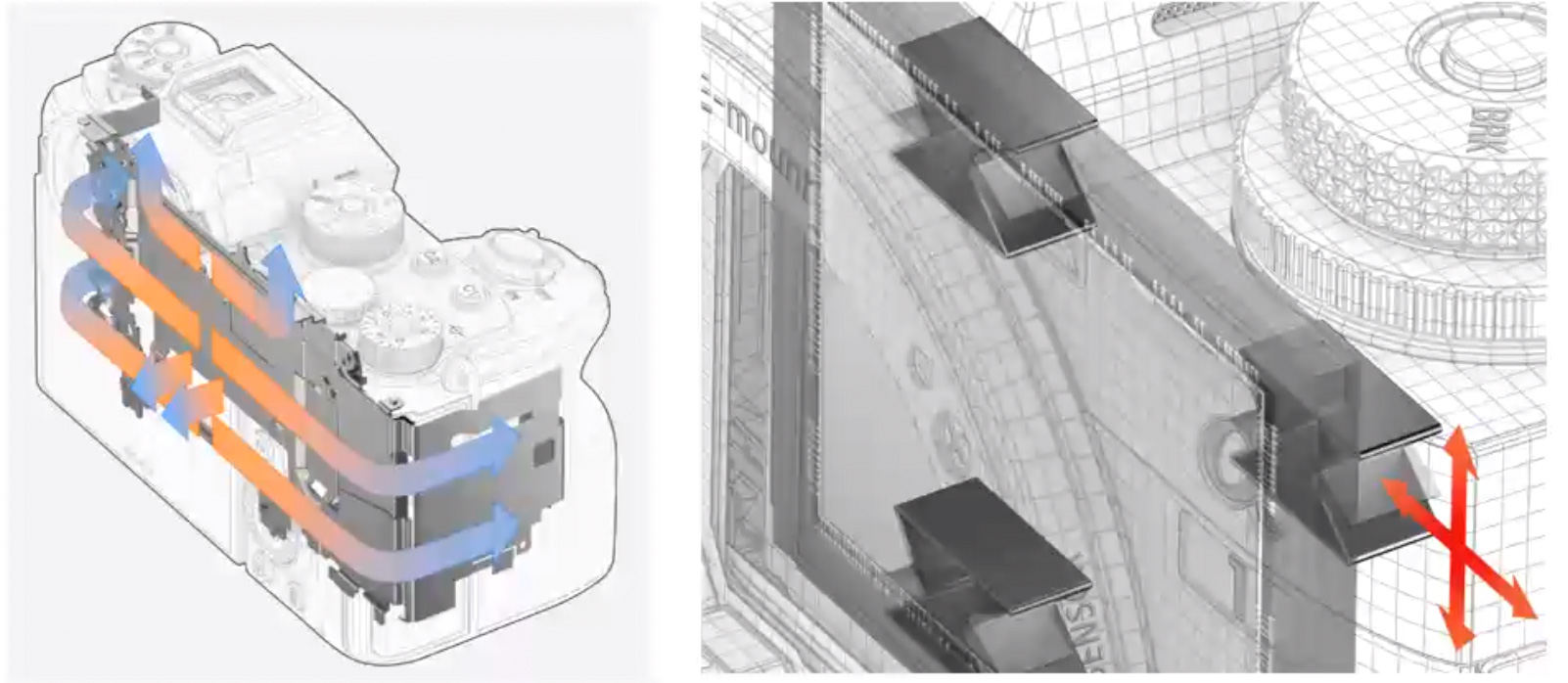Live Discussion wrt posts
above
Here are some sections I flagged in the
Youtube recording.
13:00 starts after preamble etc with Specs
16:00 Nikon's claims. all RAW = 14bit, Video banks are New
19:00 Haptics, layout of controls etc [also 1,22:30]
26:00 fps vs RAW, jpg etc. No more 12bit RAW
32:00 Autofocus. TH underscored an aspect of the Z9 autofocus, which no one else had mentioned IME (judged from screening a lot of material over the past few days). The benefits etc of these improved AF Modes of the Nikon Z Autofocus system stand out already across first reports on the camera; and we are likely to learn much more about its importance in the wild.
The AI subject recognition of objects is encoded in the 3D Tracking in the hierarchical structure to culminate in drilling down to the smallest Object - namely the Eye. It appears from the preliminary evidence of images and EVF footage that if 3D tracking cannot find Eyes it reverts to Heads; then Bodies/Torsos.... It is Always tracking shapes when this mode is activated by the photographer. As TH concluded, the deeper details as to how Nikon has actually implemented this hierarchical shape recognition are not at all clear.
It is very clear this AI empowered 3D OR works across a diverse range of active subjects, humans, animals (including fishes), birds and vehicles!
Vehicle Tracking works similarly as human, anmal modes with recognizing the Hierarchy of Vehicles > Cockpits > Front-of-a-Vehicle, down to smallest high contrast objects, headlights.
37:19-40:00 reiterated how the Z9 with reliable New auto/3D AF 'frees up photographer to concentrate on optimal image faming, composition etc... Overall take is not a lot of Limits to the Z9 > many New "camera opportunities"...
40:24 Electronic shutter 'most exciting' feature
42:00 Flicker free EVF key to framing action. Nikon finally has solved this. NO Blackout is BIG changer
42:30 "What you didn't see is what you get" wrt to major long held advantage of Leica rangefinders for journalism
49:00 Video specs
51:00 CF Cards wrt buffer. Note the table is TH compilation from initial tests etc off www reports. Subject to detailed testing
57:30 [also 1,36:40] the Z9 is most robust/weatherproof Flagship Nikon has ever made. Unlike Sony, reliable to shoot in rain. All chassis holes are sealed. As are new Z lenses - O-rings + fluoride coatings >> Very reliable rain-weatherproofing
1,03:00 new MH33 charger 1/2" bigger than new ENEL18d battery, which = much longer life. USB charges b,c,d versions in Z9 (but not ENEL18a)
1,08:00-1,22:00 New Z lenses
1,23:00 New Nikon Software
1,29:40 Timely to correct Disinformation against Nikon and Z9. refuted under 3 misinformed 'slogans' TH discusses -
1. 'comparing product lines in general vs specific cameras', errors of condemning a brand on this basis
2. 'cameras are a response to competition' > Z9 development likely started ~4 years ago.
3. 'Sony is only Sensor maker'
1,31:00... Same context, TH discussed more specifics:
View:
original size
1,34:40 Nikon buffers keeps chugging writing to card if it fills; very quick to empty etc
1,37:00 CIPA Ratings for extreme use ie maxing out camera
1,40:00 For US, delivery is discussed. "Nikon is very eager to get cameras out..."
>>>
TH reiterated why the Z9 is a D1 Moment at several points in the Discussion, as he's opined here :
https://bythom.com/newsviews/yes-the-camera-world-change.html
One point of interest flagged in this Discussion mentioned first feedback of the Z9 from Michelle Valberg; she says the 100-400 f4.5/5.6S gives excellent quality with the ZTC2 at f11, using 3D Tracking + Eye-Detect on the Z9. Some of these examples also include 500 f5.6E PF+T2 III, which is no less encouraging (reiterated in her recent video
). She also raves about the scope, speed and reliability of the 3D Tracking Mode+Eye Detect on a range of mammals and birds, also amphibians.
She will probably have much more to say about this aspects this weekend. Part of the Discussion day is Online (and free to registrants):
https://creativephotoacademy.com/event/revealing-the-soul-within-with-michelle-valberg-1/2021-11-07/
fyi a section of this can watched free, and she may present information additional to her video




